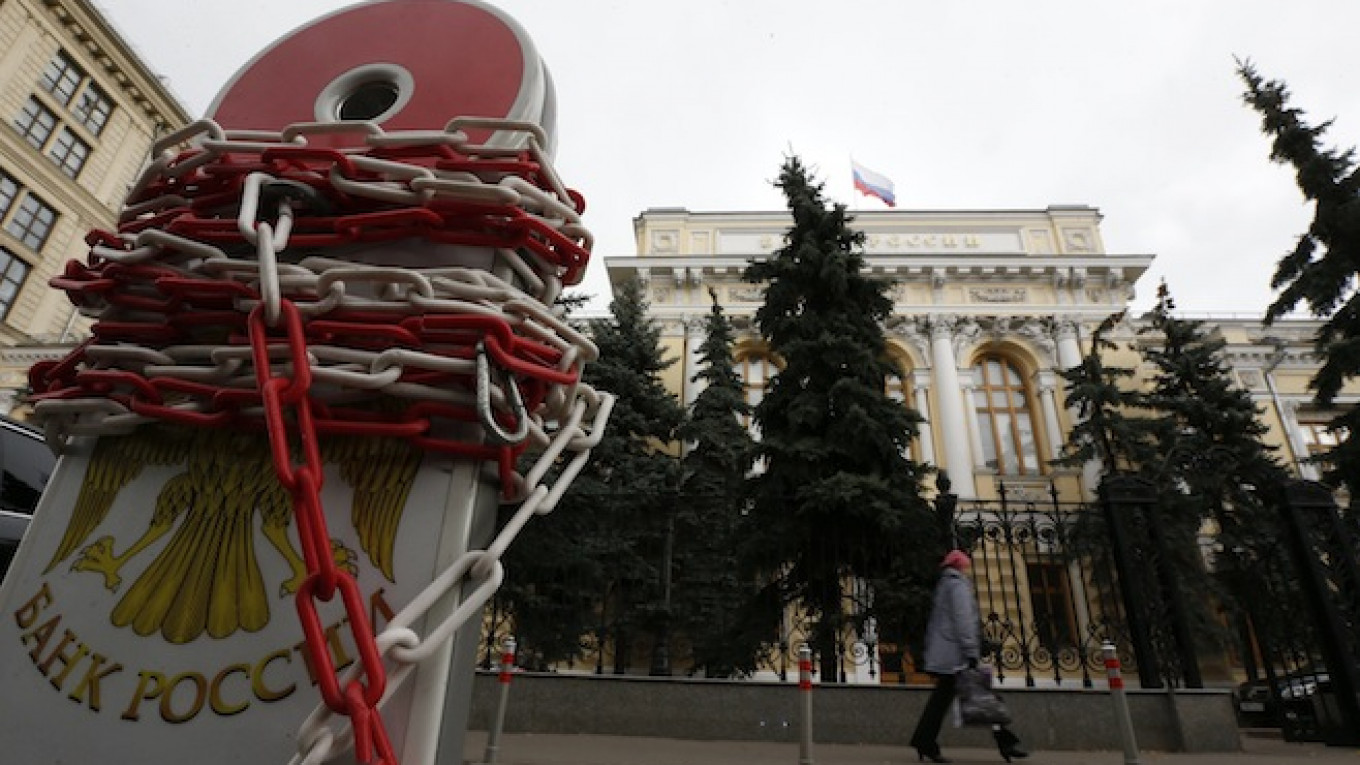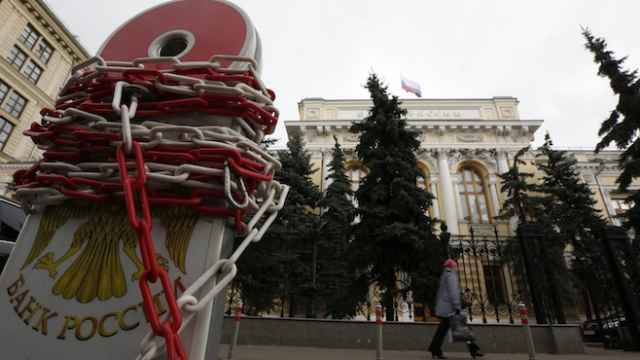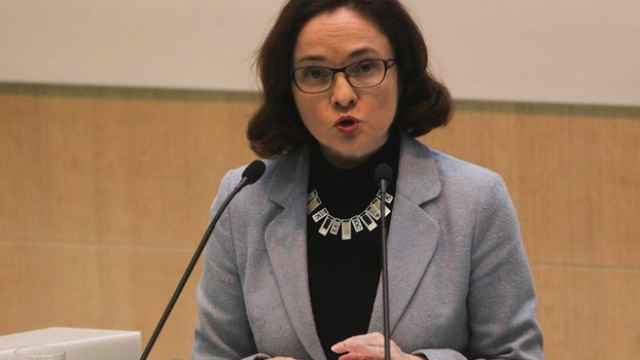Russia needs a more conservative approach towards its reserves, the Central Bank said on Tuesday, noting risks to financial stability from limited access to foreign capital, tighter U.S. monetary policy and volatile oil prices.
The bank said in its Financial Stability Review that Russia was well hedged against global markets imbalances, but the ruble could weaken and higher capital flight increase if the U.S. Federal Reserve raised rates.
Russia is sliding into recession this year, hit by sanctions over its role in Ukraine and last year's steep fall in oil prices. The Central Bank expects the economy to shrink 3.2 percent this year.
After showing reluctance to use its gold and forex to support the ruble late last year, the bank has pledged to increase its reserves to $500 billion, from $360 billion, over the next few years.
"Russia's specific situation requires a more conservative approach (towards reserves) which should take into consideration the possibility of long-term restrictions to access to foreign markets and the need to cover potential significant capital outflows in the next two-to-three years," the bank said.
The Central Bank said it would launch foreign exchange liquidity injections and market interventions to prop up the ruble if the risk of higher capital outflow materialized.
It said that the current oil price of between $60 and $65 per barrel was enough to support the federal budget and the creditworthiness of domestic oil companies.
Oil companies, Russia's chief exporters, are in a comfortable position and can weather oil prices as low as $40 per barrel, it added.
In general, the bank said in its report, Russian corporates should have no problem paying off the $65 billion in foreign debt that is due by the end of the year, saying that domestic banks have a foreign exchange buffer of around $43 billion.
It saw a potential foreign currency liquidity shortage among individual banks of no more than $4 billion this year, which could be covered by interbank lending or Central Bank mechanisms, such as repo operations.
But overall corporate overall debt remains very high, the bank said, adding that non-performing loans were growing, especially in construction, machinery and equipment production for agriculture, and retail.
"Given the high debt burden of the corporate sector, deterioration in the quality of companies' loan portfolios will continue," it said.
The bank said non-performing loans could peak later this year or in the first half of 2016 at 16.5-17 percent and their annual growth rate could come to 9-11 percent.
It estimated the total external debt of Russia's non-financial institutions at 29.4 percent of gross domestic product as of Jan. 1.
A Message from The Moscow Times:
Dear readers,
We are facing unprecedented challenges. Russia's Prosecutor General's Office has designated The Moscow Times as an "undesirable" organization, criminalizing our work and putting our staff at risk of prosecution. This follows our earlier unjust labeling as a "foreign agent."
These actions are direct attempts to silence independent journalism in Russia. The authorities claim our work "discredits the decisions of the Russian leadership." We see things differently: we strive to provide accurate, unbiased reporting on Russia.
We, the journalists of The Moscow Times, refuse to be silenced. But to continue our work, we need your help.
Your support, no matter how small, makes a world of difference. If you can, please support us monthly starting from just $2. It's quick to set up, and every contribution makes a significant impact.
By supporting The Moscow Times, you're defending open, independent journalism in the face of repression. Thank you for standing with us.
Remind me later.






